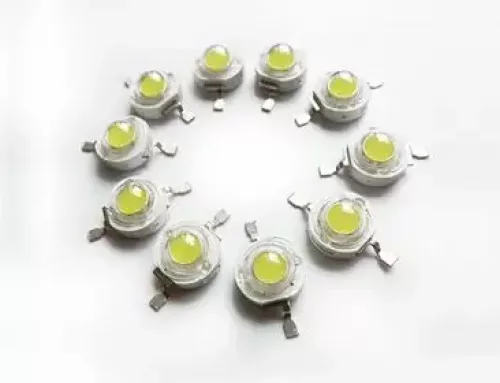It has been raining continuously for many days outside the window, which makes people feel extremely depressed, and there is no trace of dryness in the wet. I really want to take a leisurely walk in the long-lost sunshine. I always think that although there is no sunshine outside the window, I am glad that there are lights, with different color temperatures imitating various weathers, various warm atmospheres and scenes outside the window. I dare not Imagine what it would be like without lights, it would be dark and there would be no light.
Since humans learned to drill wood and flint to make fire, fire has completely bid farewell to a primitive and barbaric era. Fire has brought warmth and light to people, and they have never lived in darkness. The first “lamps” created by humans were torches made of plants bundled together. And for a long time in the future, various vegetable oils and animal oils will be used to burn lighting. It was not until humans exploited oil that the first kerosene lamp appeared and became a gas lamp.
Lamps, lighting supplies, generally refer to lamps that can be illuminated. Where there is light, there is human civilization. Tens of thousands of years ago, human beings knew how to use natural fire to keep out the cold, barbecue and light. More than 3,000 years ago, humans began to use simple lamps to carry candles and write the history of civilization. From rough stone lamps to bronze lamps, ceramic lamps to modern electric lamps, the historical changes of lamps and lanterns have marked the profound imprint of the times, and are also the epitome of social economy and culture. The first revolution of lamps was “oil lamps”, and the evolution process of oil lamps was from kerosene lamps, bronze lamps, celadon lamps to lanterns, oil colored lamps, and kerosene lamps. At the same time, lamps also recorded each time point and civilization of different times Different types and shapes of lamps will be derived. Then there is the second revolution “electric light”. The evolution process of electric light is from incandescent lamp, tungsten halogen lamp to fluorescent lamp and steam lamp. Finally, LED semiconductor lighting, LED energy-saving lamps transition to fluorescent lamps.
1. The development history of oil lamps
Kerosene lamps started from the exploitation of oil. Oil lamps have allowed human beings to transition from barbarism to civilization, and oil lamps have lasted for centuries. From the Spring and Autumn Period and the Warring States Period to the Han Dynasty, there were bronze lamps, and various forms of chandeliers and goose fish lamps began to appear. In the Wei, Jin, Southern and Northern Dynasties, celadon lamps began to replace bronze lamps, which were cheap and easy to popularize. Lamps during this period began to be peculiar, such as Kongming lamps, turpentine lamps, revolving horse lamps, and wind lamps. Next, the lamps and lanterns of the Song Dynasty began to go to glory, and the peculiar ceramic oil lamps became popular, with various styles. Pastel oil lamps and clear flower lamps became a new lighting trend, and then foreign oil lamps in the later period. At this point, the life of oil lamps comes to an end, and human beings start a new light mileage.
2. The development history of electric lamps
The electric light was invented by the famous inventor Edison, which became a breakthrough in the history of lamps. In 1880, he produced a carbonized bamboo filament lamp that could last for 1200 hours. At the beginning of the 20th century, carbonized filaments were replaced by tungsten filaments, and tungsten filament incandescent lamps are still in use today.
1. Incandescent lamp
Using tungsten wire as the filament is an invention of American scientist Coleridge, which improves the brightness and service life of incandescent lamps. The advantages are: low cost, wide operating voltage range, and convenience. For example: flashlight, console lighting.
2. Halogen tungsten lamp
On the basis of incandescent lamps, the life of lamps is further improved, and the volume is small, but it is more expensive to re-enter high-pressure gas; its main application range is wider, such as: stage lighting effects, motor vehicle lighting, spotlights , Spotlight, etc.
3. Fluorescent lamps
The production principle of fluorescent lamp is to use gas discharge to generate light energy. Its advantages are longer service life, 75% energy saving, higher luminous efficiency, and changeable light color. It completely replaces incandescent lamps and is widely used in daily life.
4. Steam lamp
Vapor lamps seal the vapors of various elements in glass tubes and then emit light with electric current. Its advantages are very high light efficiency, and its service life is twice that of fluorescent lamps, ten times that of halogen tungsten lamps, and more energy-saving.
5. Sensor light
Induction lamps, another form of fluorescent lamps that require special electronic circuitry, are also widely used today.
3. Development History of LED Semiconductor Lighting
After the 21st century, the development process of white light LED is rapid, and its luminous efficiency is improving faster and faster, surpassing incandescent lamps, and declaring war on fluorescent lamps. No matter it is material technology, chip size or shape technology, it has further developed, making commercialization The luminous flux of LED lamps has been increased dozens of times. This also indicates that future lamps and lanterns will move towards LED.

